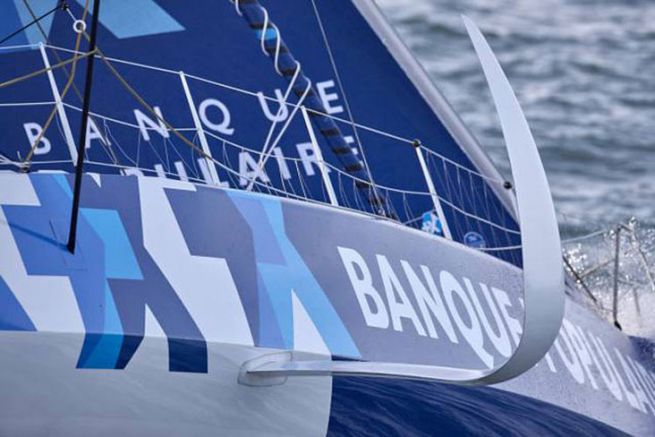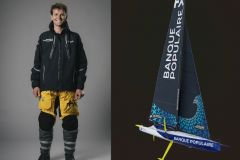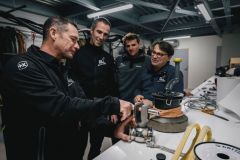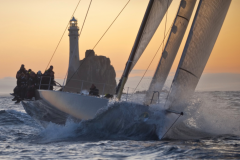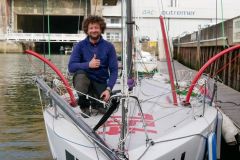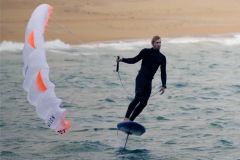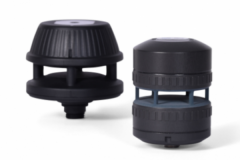The first and second in the 2016-17 Vendée Globe are both latest-generation IMOCA boats, which have opted for foils. However, on these two boats, Banque Populaire VIII and Hugo boss, both designed by the same VPLP-Guillaume Verdier design firms, the approach has been different.
The hull of Banque Populaire VIII is quite similar to the previous IMOCA's on which foils would have been grafted. Although the team had the audacity to install these appendages, the real potential of which was not yet known, for safety reasons the team decided to stay with a compromise which could either work without the foils, or even be able - before the start - to reinstall traditional daggerboards. In the specifications, the boat had to be homogenous at all points of sail. It is a wide boat (5.80 m) with large forward volumes to compensate for the power of the sail motor. The rigging and keels are very far back.
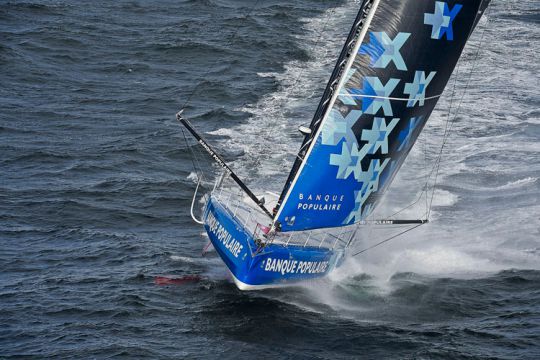
The load-bearing surface of the foil produces both a lateral force (anti-drift) and a vertical thrust (to lift the hull out of the water). These foils are broken down into three parts: the "shaft" which enters the well, the bearing plane in the curve of the foil which relieves the boat and the "tip" vertical anti-drift plane.
Since the launch of Banque Populaire VIII, trials and the first races have shown that the foils have almost completely relieved the boat. The hull comes out of the water. The development of a second set of thinner foils, which are less disruptive in terms of piercing the surface, has improved their performance. The tip (the vertical part of the foil) now does most of the work.

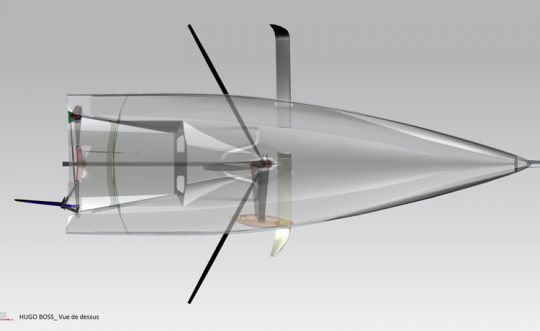
In comparison, Hugo Boss is being developed according to Alex Thomson's desire for a more radical program. The boat is less versatile. The work of the foil is more important. It pushes more of the boat's mass. The result is a slightly narrower boat (around 30 to 40 cm less than Banque Populaire and above all 100 kg lighter), but one on which the skipper has to work assiduously to benefit from the dynamic torque. Alex Thomson must therefore be more attentive to ensure that he is always trimmed optimally (sail trim, keel angle, foil draught, keel angle).

As a result the foils have very different designs. As shown in the front views given by Guillaume Verdier, the curve of the Shaft is reversed on the 2 boats. On the other hand, if the two boats do not have the same hull width, the foils, once fully extended, are equal. Hugo Boss' foils are longer than those of Banque Populaire. This poses a problem when they are retracted. Contrary to what the diagram shows, the Hugo Boss foils do not come out on deck in front of the mast. That's why the skipper could never fully retract them.
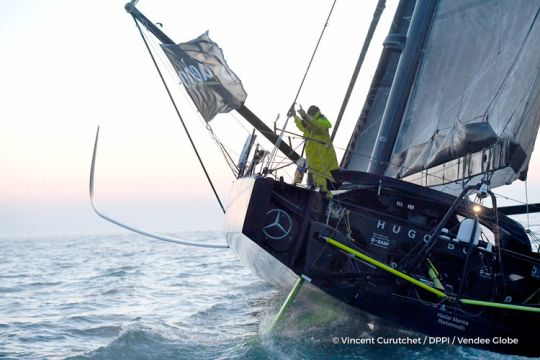
At the end of the Vendée Globe, Banque Populaire's victory does not prove that its configuration is the best. Hugo Boss has in fact shown that he has very good speed and proved it by taking the 24-hour speed record away from François Gabart on his way back up the Atlantic. What's more, if we look at Armel Le Cleac'h's course, which took 3 days less than the winner of the previous edition, it should be pointed out that he covered much less miles. Taking the race as a whole, the average speed of the IMOCA hydrofoil boat is only 0.1 knots faster than François Gabart's Macif. That is enough for those already in the running for the next edition in 2020 to swear by hydrofoil boats..
